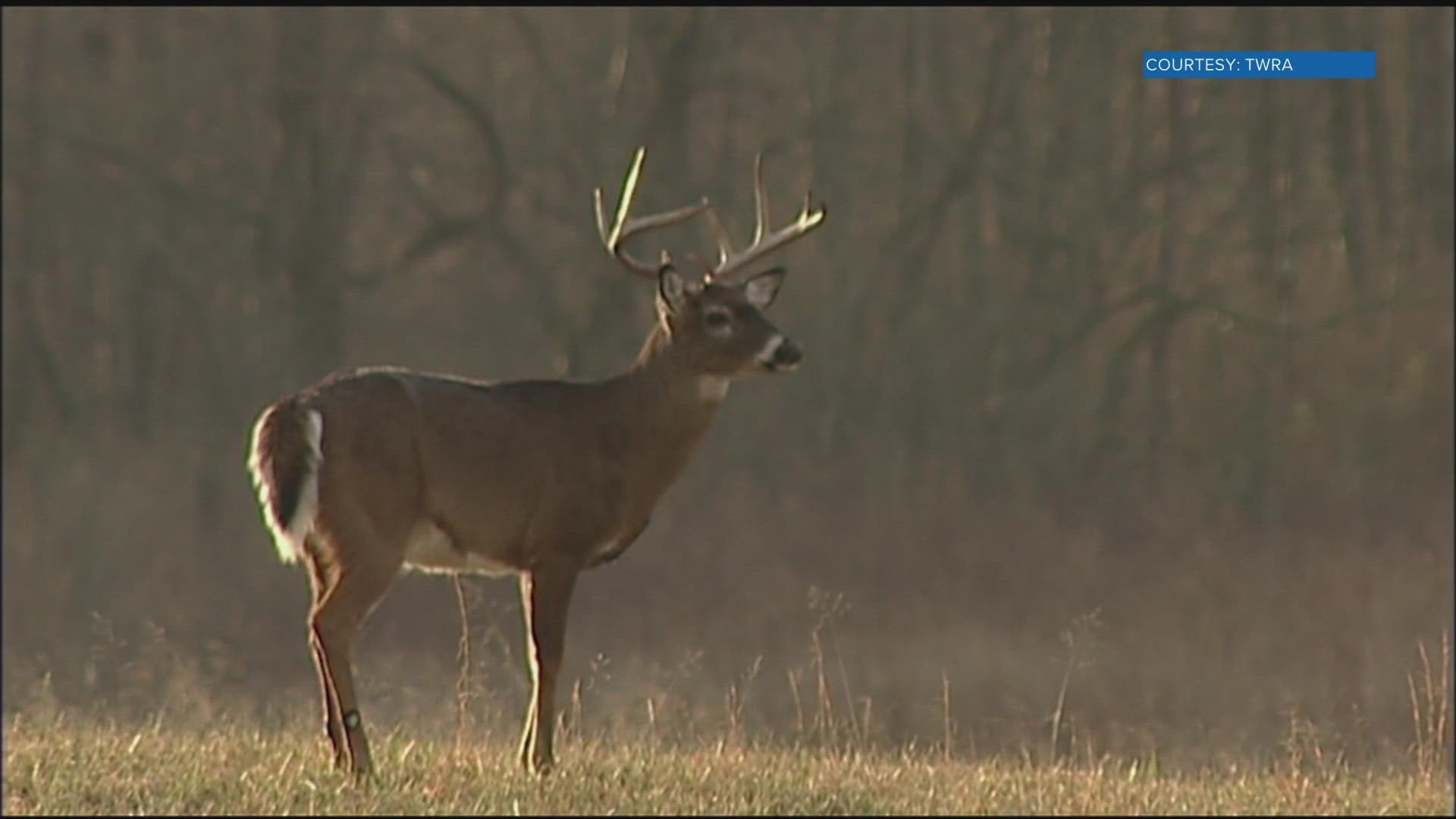NASHVILLE, Tenn. — Deer hunters in Tennessee have some new tools they can use to manage and monitor the spread of chronic wasting disease among deer and elk herds in the state, and across North America.
CWD has mostly been found in West Tennessee, and since it was discovered it has been a major concern to hunters and wildlife professionals. The disease is progressive and fatal, affecting the nervous system of cervids like white-tailed deer, elk and moose.
TWRA said it is a type of prion and shares features with diseases like mad cow disease, or scrapie in sheep and goats. The disease basically creates holes in the cervid's brain cells and causes a spongy appearance. It's transmitted through and animal-to-animal contact. It can also be spread through food and soil contaminated with excretions like feces, urine and saliva. Contaminated carcasses can also spread the disease indirectly.
There is no evidence that CWD poses a risk to people. However, the CDC recommends testing deer meat harvested in an area where CWD is present.
It was confirmed in Tennessee in 2018 and since then, the TWRA said they have developed a CWD response plan that involves communicating information about the disease to hunters.
The Chronic Wasting Disease Alliance also recently developed three online mapping tools to help document, track and manage the spread of CWD.
The first tool, CWD in North America, shows the spread of the disease across the U.S. and Canada in a simple design.
The next tool, CWD Hunting Regulations Map, curates regulations about CWD and hunting for states and provinces across the continent. It also shows the status of CWD in different areas.
The final tool, State and Province Carcass Import Regulations, provides a map showing the laws surrounding whether deer meat can be imported into different states, and where the meat is allowed to come from.
Hunters can use the tools to plan hunting locations, consider their routes from out-of-state hunts or just learn more about CWD.

